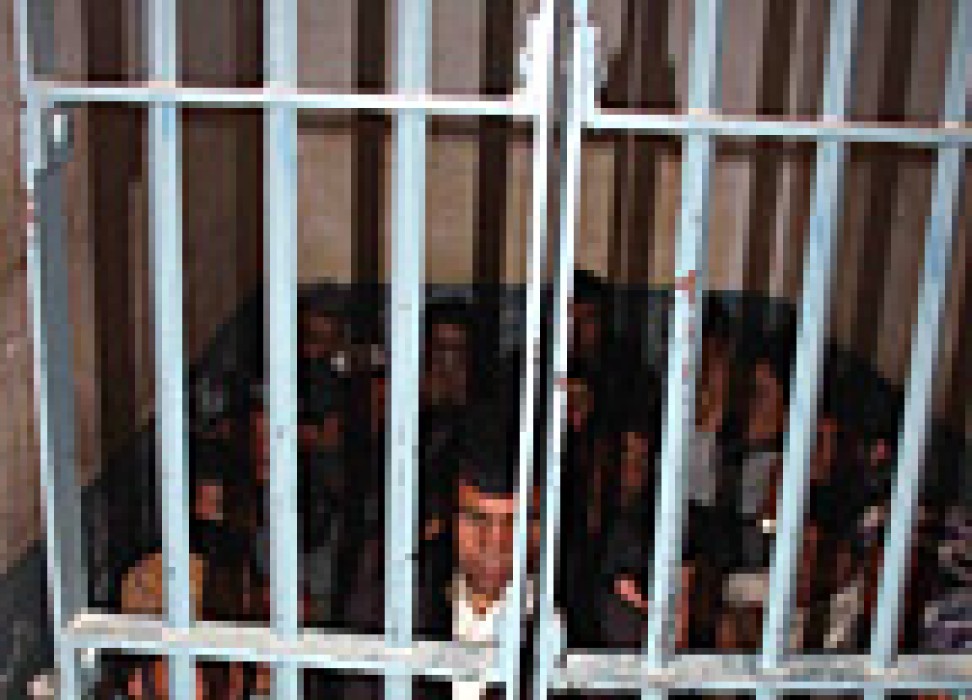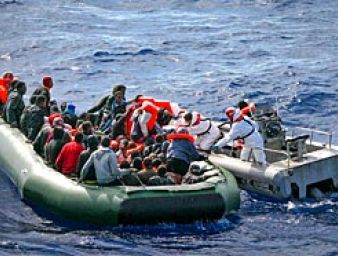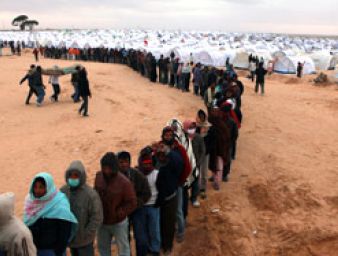Crossing borders: for millions of people on the move, borders can be a dangerous space
10 April 2012

The UN Human Rights office (OHCHR) focuses on the protection of the rights of all migrants, regardless of their legal status. The OHCHR strategy recognizes that migrants in an irregular situation are more likely to face discrimination, exclusion, exploitation and abuse, and are less likely to be able to seek redress for violations, fearing detection and deportation.
In 2010, the inter-agency Global Migration Group asserted that “Although States have legitimate interests in securing their borders and exercising immigration controls, such concerns cannot, and indeed, as a matter of international law do not, trump the obligations of the State to respect the internationally guaranteed rights of all persons, to protect those rights against abuses, and to fulfil the rights necessary for them to enjoy a life of dignity and security.”
At a recent gathering of experts in Geneva, held to identify the protection gaps for migrants at international borders, senior OHCHR official, Craig Mokhiber noted that in recent years the Office has stepped up its work on migration and now also focuses on so-called ‘mixed flows’ – people who are moving with various motivations and legal profiles, such as refugees and asylum seekers, unaccompanied children, victims of trafficking, irregular migrants and smuggled migrants.
“The strategy notes,” Mokhiber said, “that there is a growing human rights crisis at international borders… where violence, discrimination, unlawful interception, refoulement (returning people to a country where they could face imprisonment, torture or execution) and even loss of life are increasingly common.” The Office believes that all migrants are entitled to all human rights, regardless of their motivation for migration or their mode of arrival, their country of embarkation, their gender, age, or nationality.
A legal analysis paper commissioned for the meeting describes a situation where border protection measures and surveillance have escalated dramatically in recent years in response to public and political fears about rising migration and the loss of control of borders.
However in reality, experts agreed at the meeting, the total international migrant population has remained remarkably stable for the past 60 years at around 3 percent of the world’s population, and the numbers of irregular arrivals at most international borders are a relatively small fraction of total arrivals. Concerns were raised that border controls were having a disproportionate impact on the human rights of migrants.
“Increasingly tough controls at international borders have escalated the risks and raised the stakes of movement, forcing many migrants into dangerous modes of travel,” Mokhiber said.
According to a study carried out by OHCHR in 2011, more than 1400 people lost their lives at sea after leaving North Africa and trying to reach Europe in the first eight months of the year.
A recent report of the Parliamentary Assembly of the Council of Europe found a “catalogue of failures” on the part of States which led to the deaths of 63 people fleeing the conflict in Libya by sea in March 2011. This included a failure to react to distress calls and a “vacuum of responsibility” for search and rescue.
Of particular concern is the practice of collective expulsions of migrants who arrive at borders in an irregular situation. In welcoming the recent judgment of the Grand Chamber of the European Court of Human Rights in the case of Hirsi Jamaa et al v Italy, OHCHR called on all States to recognize and respect the fundamental rights of all migrants, guaranteed by international law, regardless of their immigration status or other status. In its submission to the Court, OHCHR had argued that an individual intercepted at sea should not be sent to any other State without “a prior reasonable and objective examination of the particular circumstances of that particular individual’s case.”
“In establishing that all migrants are entitled to an individual assessment of their human rights situation, regardless of whether or not they are assumed to be in need of international protection, the case has set an important precedent,” Mokhiber said.
The meeting concluded that there remain significant gaps in law, policy and practice both en route and at borders, and suggested ways in which such gaps could be filled including through the provision of authoritative human rights guidance on the situation at international borders.
10 April 2012



